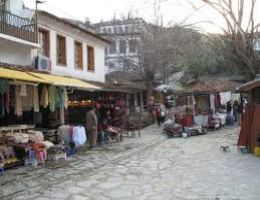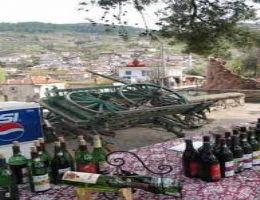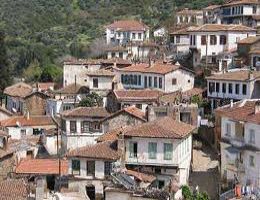| Pound | : 58,000 TL |
| Euro | : 49,000 TL |
| Dollar | : 42,000 TL |
Transfer Search

+90 535 437 93 55
+90 256 813 82 88
Sirince Village
9000413
Daily Tour / Wednesday&Friday
This pretty old Orthodox village, 12 km away fromEphesus and 30 km from Kusadasi, was once Cirkince ("ugly"). Indeed its habitants gave this name on purpose as they did not want to be bothered by foreigners nor to share the beauty of their village.
Join a group for a cultural tour to this old Greek mountail village. Check out the amazing handicrafts on offer by the village women. Sirince is also famous for its wines, taste before you buy!! We reccomend you to try many on offer..
The village of Sirince referred in ancient sources as the “Ephesus on the Mountain” suggests long established settlement. Although there seems to be no concrete indication of how it came onto the stage of history, the dominant theory is that a small group of people resettled on the mountain, following the fall of the city of Ephesus and its harbour being moved to Kusadasý (Scala Nova). The people might have preferred to move and settle in the mountains due to problems caused by the silting and the flooding of the river Meander.
It is told in the village today that this new village on the mountain was called Cirkince, meaning “rather ugly”, with the intention of drawing less attention and interest of outsiders, thus ensuring security. One of the principal anecdote abput naming of the village tells that a group of Byzantine Greeks who were freed from the dominion of Aydýnogullarý and sent away for re-settlement, were asked by the neighbouring villagers whether the new place they had settled was nice or not. The answer was “rather ugly”.
The oldest building in Sirince is from the Hellenistic period, initially built as a tower initially, and most probably left from the Lysimakhos era corresponding to the time when the city of Ephesus was established. It was part of an early warning system built in the Klasseas Valley which was of strategic military importance. The building has had some alterations during the Byzantine period and is locally thought to have been a monastery.
A ceramic seal with the name of Georgeos used to brand bread in a bakery was found in a peach garden indicating the existence of a community life in the region in the Byzantine period.
Price Includes
Return Transport, Lunch, Guilde
Extra Information
Depart: 08:30
Return: 18:00




 Türkçe
Türkçe English
English







